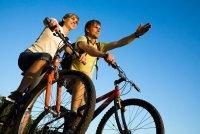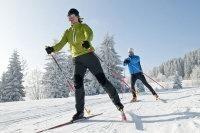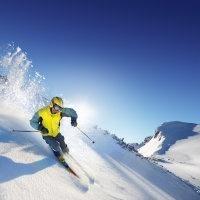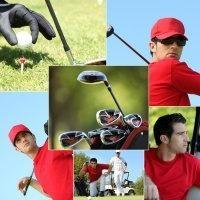Sports and back
Especially after the London Olympics, many people ask themselves: Is sport murder? Because the media made it known that the superstar of the Olympic Games Usain Bolt as well as many other well-known top athletes such as Vitali Klitschlo, Mario Balotelli, Timo Boll, Mark Spitz, Miroslav Klose or the top athletes who were already treated in our center with sometimes severe back pain or even suffered from a herniated disc.
Even top athletes are not spared from back pain and statistically they suffer from complaints just as often as any other person. Sometimes even more often. High-performance sport sometimes means maximum stress for the entire body and organism. Especially athletes with a disposition, i.e. a predisposition (e.g. family or genetic) such as a slipped vertebrae, can compensate a lot over many years through sport and physical fitness, but it also happens here due to the constant extreme stress, exactly how in the normal population, sometimes severe back pain, neck pain and / or even a herniated disc.
Many ask themselves: how can this happen to a well-trained top athlete? The answer is usually as simple as it is logical. We treat many competitive athletes in our center. The problem of many high-performance athletes as well as ambitious recreational athletes is that the focus is mostly on leg strength, upper body strength including the arms and shoulders and less often on the abdominal muscles. The back muscles are completely neglected by almost all athletes!
A good example is the reigning world rowing champion Matthias Schömann-Finck ( http://www.schnellundleicht.com/ ), who is treated by us. One could actually assume that rowers in particular have strong back muscles. After a test with us, the opposite could be proven. After a successful endoscopic disc surgery, he became world champion again this year. Congratulations!
Dear Doctor. Schubert,  it's done! After all, this season brought me another world championship title! Last Saturday my crew and I became world champions in the lightweight eights in Ploviv, Bulgaria! An all the more wonderful success, since I have "only" had silver three times in this boat class and especially since I had to watch the last victory of a German lightweight eight in 2010 in rehab on TV! Once again a "food for thought" about how well the intervertebral disc thing went on at the time!
it's done! After all, this season brought me another world championship title! Last Saturday my crew and I became world champions in the lightweight eights in Ploviv, Bulgaria! An all the more wonderful success, since I have "only" had silver three times in this boat class and especially since I had to watch the last victory of a German lightweight eight in 2010 in rehab on TV! Once again a "food for thought" about how well the intervertebral disc thing went on at the time!
A key to success was certainly not only the endoscopic disc surgery, but also the fact that after the treatment he increased and dedicated himself to building his back muscles!
Conclusion : Sport is not murder! But the right dosage and the right compensatory movement and strengthening as well as targeted physical compensation are important. Thus, even in high-performance sports, a lot of back pain and back complaints and perhaps even herniated discs could be avoided. Through a targeted back program!
Regular exercise is not only good for the heart and circulation. Properly dosed, sporting activity has been proven to protect against back problems. On the other hand, sporting activities help to alleviate back pain in particular and back problems in general. Even if such prophylactic measures cannot always prevent back pain, it is all the more important to prevent back pain in general by moving, moving, moving. Sports that are easy on the joints, such as swimming, cycling and Nordic walking, are particularly suitable here.
On the following pages we will show you which sports are good for you if you have back problems. We also show how you should behave if you have back problems and in particular which types of sports make sense after a back operation and what needs to be considered in particular.
- SWIMMING / AQUA JOGGING


- is the best back training and good for the entire organism. The cardiovascular system and metabolism are strengthened, important muscles - especially the back muscles - are strengthened. The buoyancy of the water relieves the joints and spine and, especially in the case of acute problems, the intervertebral discs. The water resistance increases the training stimulus of the muscles. Backstroke or breaststroke is recommended.
Risks: hardly any risks for the back and spine.
Caution when swimming breaststroke: If there are problems in the neck and shoulder area, there is a risk of additional tension and the resulting increased formation of a hollow back. Here it is recommended to alternate between at least 2 types of swimming.
- NORDIC WALKING
-
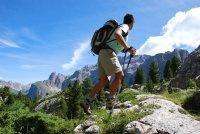
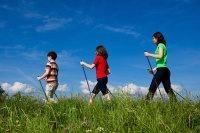
- is a good workout for the upper body - it works harder than running. The rhythmic alternation of stress and relief not only strengthens general endurance but also the neck and shoulder muscles.
Risks: hardly any risks for the back and spine.
Attention : If the technique is bad, the training can also have the opposite effect! A cramped posture of the sticks or a bad physical posture overloads the shoulder and neck muscles.
- CYCLE
- A good workout for: the deep back muscles - the asymmetrical kicking movement, similar to the effect of Nordic walking, strengthens the back muscles. The spine is also somewhat relieved of the body weight. When riding a bike, the so-called back extensors have to do intensive work to keep up.
Risks: few risks for the back and spine.
attention . If you sit in a bad position, cycling can even have the opposite effect and cause back pain. The correct adjustment of the seat position, handlebars and saddle should be carried out by a professional.
- CROSS-COUNTRY SKIING / DOWNHILL SKIING
- a good workout for: the whole body. The gliding promotes rotation in the spine and thus strengthens the deep back muscles. Primarily trains the leg and arm muscles. Helps to stabilize the trunk muscles in particular. Downhill skiing is conditionally suitable. If attention is paid to the right technique, the thighs and stabilizing (autochthonous) back muscles are trained.
Risks: few risks if attention is paid to correct technique.
Attention : If the technique is bad, the training can also have the opposite effect! A cramped posture of the sticks or a bad physical posture overloads the shoulder and neck muscles.
- GOLF
- good training for: the cardiovascular system, muscles, gross and fine motor skills, coordination and concentration. The game of golf is not only enjoying increasing popularity in Germany. This is not surprising, since playing golf is certainly one of the healthier ways to be active. An 18-hole round of golf usually takes about three to four hours. During this time you are on the one hand in the fresh air, but on the other hand in order to master the distance, there is a constant change between coordination of the movement and concentration on the tee and the route. In addition, staying in the fresh air strengthens the immune system.
Risks: the right technique is extremely important! There are few risks if attention is paid to correct technique.
Attention : If the technique is bad, the training can also have the opposite effect! A cramped position of the racket or poor physical posture, especially with excessive hollow back formation, hunchback formation and torsion of the spine overloads the intervertebral discs and ligamentous structures of the lumbar and neck muscles and can lead to neck pain or back pain!
Recommendation : regular warm-up and stretching is highly recommended. If you already have back problems, “back-friendly” teaching or coaching is highly recommended!
Dr. Schubert in an interview with Jörg Vanden Berge on "Golf after an endoscopic disc operation"
Dr. Schubert in an interview with Jörg Vanden Berge and Jörg Wontorra Topic: Golfing and back pain, a "no go"?
Kind regards,
Dr. Michael Schubert





